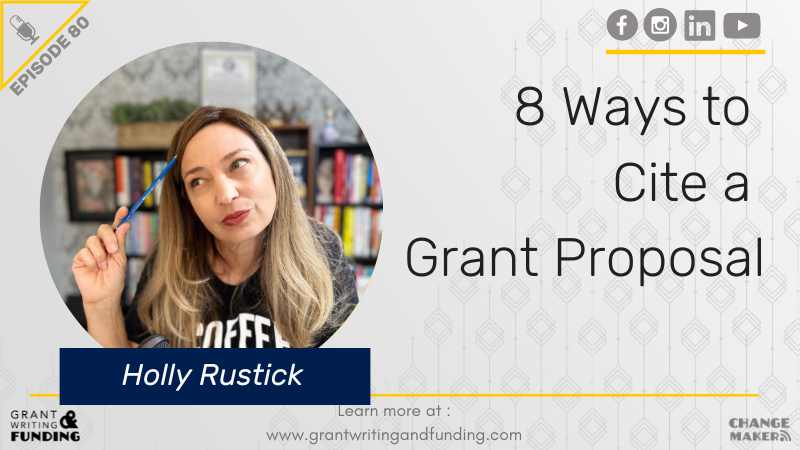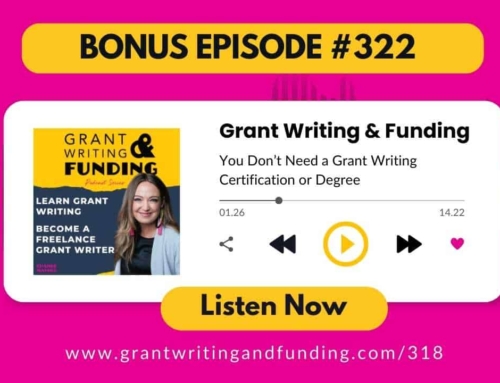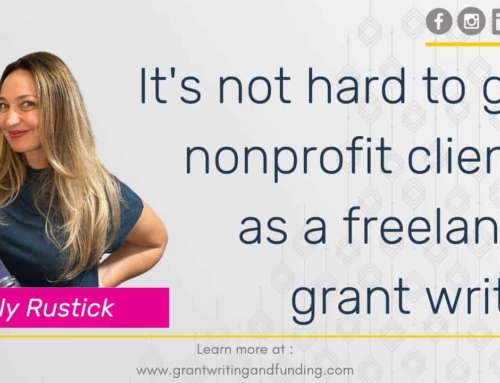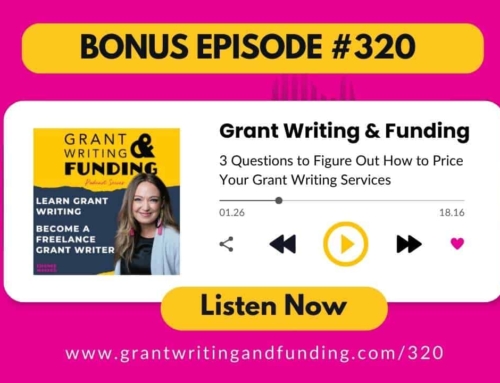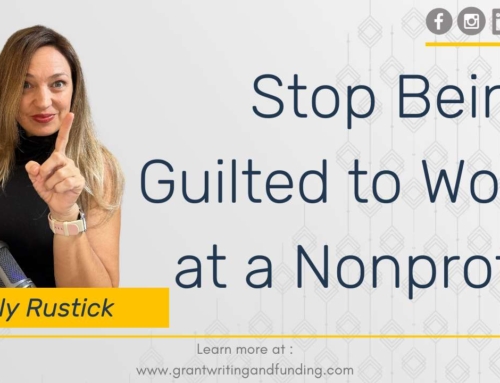8 Ways to Cite a Grant Proposal
If you are gathering data for your needs or problem statement for your grant proposal, then you need to ensure that cite your research. Citations in your grant proposals showcase credibility for your needs section and will get you more points!
Grab your free grant research citation tool here.
Get the Grant Research Citation Tracking Tool
![]()
Having a simple grant citation research tool will help you avoid the rabbit hole of open-ended research.
But having research systems is key when writing grants and gathering citations.
What happens if your computer restarts and mysteriously clears all your cookies before you are able to cite your sources?
UGH! ACK! The world definitely feels like it’s going to end as if Thanos just snapped his fingers and all your research just went *poof*.
#1 – How to keep track of your sources and have a file that can easily be translated into a bibliography
Let’s look at the research citations for grant proposals.
#1: Always adapt to what the Request for Proposal or Funding Opportunity Announcement requires when using citations. This is my disclaimer.
However, many RFPs and FOAs do not have this outlined. My recommendation is to utilize American Psychology Association or what’s known as APA style.
The other way to cite a grant, you may have heard of in your English Composition class: MLA style. However, APA is more common as it is used across many more sectors; such as science, business, and education.
MLA is most commonly used in the humanities, so if you are writing a grant proposal that has to do with anything in humanities you may choose to utilize this style.
In any case, most grant reviewers won’t mark off if you have the last name in the wrong place or other technical errors (although always check the RFP or FOA), However, if you fail to cite your information, statistics, and reports you could get points marked off your grant.
But if you are a firm MLA lover and the grant allows for it, then use MLA!
We are just utilizing APA in this episode and downloadable. Just make sure whatever you do that you stay consistent.
So if you utilizing MLA for one source, use it throughout. The same goes for APA.
Get the Grant Research Citation Tracking Tool
![]()
#2: Why use citations and a bibliography for your grant proposals?
You cannot pull statistics out of the sky.
As a former university professor and teacher, I let me students know this right away.
If you haven’t included citations, how do I not know you aren’t just making stuff up? On the other side, if you aren’t using citations, but clearly rewrite something from a source you are plagiarizing.
Eeek. Yes, that counts as an automatic failure for a university course, but it’s important not to plagiarize when writing grants, as well.
It’s safe to say that if you are copying and pasting from somebody else you should use quotation marks and give credit to where you got the information. This would ensure that you are not plagiarizing while giving credibility to outside sources. However, you can also paraphrase, which is you can summarize a source’s information in your own words. When you do this you also need to give credit to that source.
#3: How to use citations in your grant proposals
As you do your grant research you are going to run into awesome information and you need a place to track this information. You may not need all of it for the particular grant you are writing, but it could come in handy.
This is what it would look like:
Mayor Sally Cat stated that “getting transportation to supportive services is impossible without having reliable public transportation. I nearly got hit by a car as there are no sidewalks on the mile-long walk to the meeting house” (2017).
If you wanted to paraphrase you might put something like the following:
The Mayor has even reported that the roads are dangerous in Cat city and that the sidewalks cannot be navigated (Cat, 2017).
Now imagine NOT using the citations.
This would cause these statements (and credibility) to fall flat.
How do I know that what you are saying is accurate?
Utilizing simple reference points by using citations elevates your grants tremendously and also increases the professionalism of you as a grant writer because people know you are doing your research.
Now something fun that you can do in grant proposals is to add footnotes.
We’ll talk about that in a minute, but first, let’s talk about the entire enchilada.
#4: Where to Get Citations for Grant Proposals and How to Reference Citations
So where I am I getting that quote from Mayor Sally Cat or the year 2017?
Well, I may have gotten this in a personal interview, from an online article in a newspaper, or on a blog. In any case, the information you need to have changed based on where you got the information.
- Footnote
- Contributors’ Name (Last Name First)
- Last edited date
- Title of resource
- Title of resource
- Main Source
- Retrieved from http://Web address
- Blurb – connects to grant
Contributors’ Name is who wrote the article, blog, etc. In this case, you want to put the last name first, then a comma and then the first name. Easy peezy. When referring to the source throughout you can state the full name once and then utilize the last name.
Last edited date: This is because websites, publications, and other sources get updated periodically. Use the date that was last updated. Sometimes there are no updates so just use that date.
Title of the Resource: This is the title of the blog, article, etc.
Main Source: This is if there is the main source. If you got the article from a newspaper it would be the name of the newspaper. This is not required but helps to make sense overall.
Retrieved from website: This is the direct URL link.
Blurbs to connect grant: This is for you as a grant writer or if you are a freelance grant writer. Maybe you would just copy and paste what the mayor said into that area or any other information you think may be relevant to your grant. If you are doing research on a few different objectives for a grant, for example, poverty needs in the community, high suicide rates among teenagers, and high pregnancy rates among teenagers in your community you may want to have different excel sheet for each category and track your citations that way. You can refer to the free downloadable excel sheet for a sample.
#5: Implementation of Citations in Grant Proposals
As you are writing your grant, you can easily copy and paste your blurbs and put them into the grant and then use a direct quotation with a citation or paraphrase and use your in-text citation.
The other thing that this can help with is if you have some information, but the blurb isn’t quite right. Go ahead and click on the URL and see if you can find anything else. This is way better than Googling it over again to try and find the right link you clicked on.
Of course, it is also good to create a bookmark for each grant you work on and save relevant pages under that bookmark. But do not rely on this as you may clear your cookies and have everything accidentally deleted and you will eventually get a new computer. Having electronic files is a more sure way to keep your data.
#6: Footnotes vs. Bibliography for Grant Citations
Footnotes. I love footnotes. I use these a lot, especially when for letters of support and when I can’t attach a bibliography.
Many grants, especially foundation grants, may not allow added attachments to your grant narrative. If you only have two or four pages, then you don’t want to use one of those pages for a bibliography. However, you can insert footnotes to still show your sources. So in the above example you would utilize the same quotation from the mayor and could include the last name and year, but directly after that in your Word document, click ‘References’ in your menu and click ‘Insert Footnote’ under footnotes. This will automatically include applying a tiny little number in your document and then include the same number in the footer portion of your Word doc. I recommend that you change the size to 8 or 10 pt. if you are pressed for space. This is awesome as it basically creates the bibliography for you within the Word document.
So what would you put in this footnote? You would put the same reference as you have in your excel sheet: Contributors name, year, the title of resource, main source, and URL. If you are including a bibliography/ works cited / Literature page, you don’t necessarily need a footnote. But if you are not including a resource, utilize footnotes.
#7: Bibliography & Works Cited in Grants
Okay, there is a difference between some of these but sometimes these are used interchangeably for grants. Basically what you will do is have an attachment with all the information from your excel sheet, but you will not include your blurb. Now if the grant asked for a Literature Review, then you would include your blurb and any additional information on why you chose that source. But let’s keep it basic.
Here is what your bibliography would look like:
Cat, Sally. December 2017. “Sidewalk Trouble in Cat Town” Cat Gazette. www.catgazette.com/sidewalktrouble
Now here is one extra piece to do. If you are using the excel sheet before you transfer your information into a Word Doc bibliography click on the column for Contributor’s Name and Go to the “AZ Sort Filter” and click it. In this way, it will alphabetize all your sources automatically, because you do want your sources alphabetized in your bibliography. This will not put the order in which you used them in your document but will alphabetize them. This is what you want so that they can be easily referenced.
There it is. That is how to systematize your research, give credibility to your information, and to deliver a professional-looking grant. This will definitely give you a MAJOR edge to other grant applications that do not include sources or a bibliography!
#8: Summarize Citations in Grant Proposals
- You must use citations to provide credibility for your words and to ensure you are not just plagiarizing!
- You can utilize MLA, APA, or any other style but be consistent
- Make sure to include the last name, year, title, source, and URL for APA
- Use footnotes for when you cannot add a bibliography
- Use bookmarks in your internet browser when doing research
- Utilize the Free Downloadable Grant Research Source Tracker
- Use a bibliography and make sure it is in alphabetical order
FREE RESOURCES
Download one of Grant Writing & Funding’s free resources to achieve, advance, & accelerate your funding skills.

